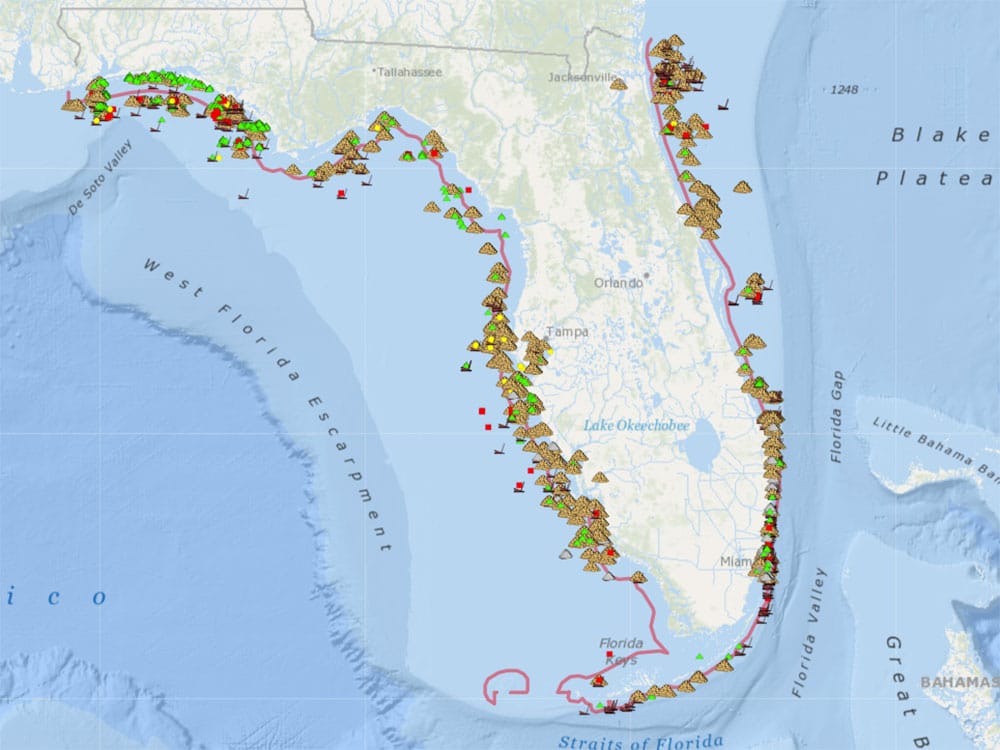
Not many states can match Florida’s remarkable artificial reef program, and the state fisheries folks have an interactive website that is superb in its detail of where reefs are located, water depths, type of reefs (sunken ship, concrete rubble, demolished bridge debris, etc.) and their pinpoint locations.
Since the 1940s Florida has amassed over 3,800 artificial reefs around its coasts, and they’re all detailed for anglers to pursue for their next offshore adventure.
The state has several helpful web-based tools to allow anglers to locate potential hot fishing spots, and the website is very interactive and responsive. It allows anglers to zoom in to various portions of the state, so that access to coastal inlets and passes can be established long before a day offshore is planned.
Once a region is selected, an angler can zoom to that area, and then continue closer inspection of a specific reef spot.
On the website great detail is provided once an area is chosen for fishing. By scrolling to the Panhandle, for instance, a large array of reefs shows off Pensacola and Destin. By zooming to a specific reef – say the Joe Patti Memorial Reef off Escambia County near Pensacola – it quickly is learned by a website pointer that the reef is in 50 feet of water, offering 15 feet of relief off the bottom. Joe Patti consists of a 440-ton barge that was sunk in July 2013. Precise navigational coordinates specify its location.
Dozens more reefs are shown off the Pensacola area, with as much detailed information as the Joe Patti Reef. This allows anglers to easily set up a day of reef fishing, targeting several reefs in close proximity to each other.
Thousands more reefs are shown on the state website map, spanning in the Gulf from Pensacola east and south through the Big Bend country, along the coast off Clearwater, Tampa, Charlotte Harbor and to the Ten Thousand Islands.
The reefs along the East Coast of Florida are shown in similar exacting detail, with abundant clusters of fishing reef sites off Jacksonville, St. Augustine, Daytona Beach, Stuart, Palm Beach, Ft. Lauderdale, Miami, and along the Atlantic side of the Florida Keys.
It is truly a remarkable internet library of reef locations, and they have just been updated for this year by the Florida Fish and Wildlife Fish Commission (FWC).
In addition to the interactive website, PDF and Excel downloads and print outs of all the reefs can be made off the state website so physical copies of reef locations can be had. Further, GIS shapefile and .kml files can be taken from the website.
I checked some of the reefs I’m familiar with against GPS locations I have filed and they agree on the locations and names. While this sure isn’t a thorough test, it shows the accuracy of the state reef site listing.








